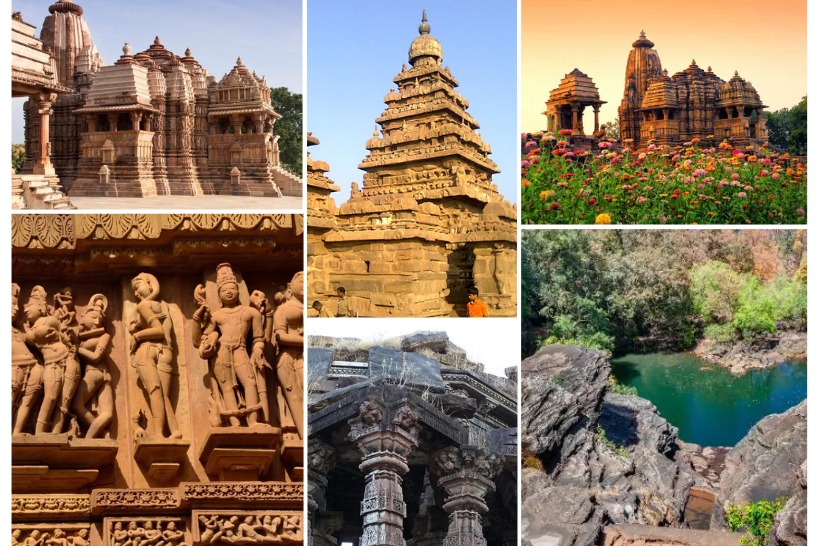India’s rich tapestry is shrouded in culture and history. Ancient landmarks, especially temples, form a significant part of our country’s heritage. Among these, the temples of Khajuraho, a UNESCO World Heritage Site, stand out as an exceptional testament to the architectural and artistic brilliance of the medieval Chandela dynasty. These Nagara-style Hindu and Jain temples, built between the 10th and 11th centuries, are renowned worldwide for their intricate and exquisitely carved sandstone structures. What sets the Khajuraho history apart is not only the remarkable architectural design of the temples housed here but also the intricate and sometimes controversial sculptures that adorn them. These sculptures, which adorn the temple walls, depict various aspects of life, sensuality, spirituality, and mythology, providing a unique window into the cultural and philosophical nuances of ancient India.
Khajuraho: Unraveling its Cultural and Historical Legacy
1. Khajuraho History

The history of Khajuraho temples is a fascinating journey into the cultural, architectural, and dynastic tapestry of medieval India. These temples are a product of the Chandela dynasty, which ruled over the region from the 9th to the 13th century and established their capital at Khajuraho.
The Chandela rulers embarked on an ambitious temple-building project between 950 and 1050 AD, resulting in the creation of the stunning temples that we see today. It’s important to note that the construction of these Hindu and Jain temples was not just an architectural endeavor but a reflection of the Chandela dynasty’s devotion to the gods and their vision of creating sacred spaces.
2. Cultural Significance
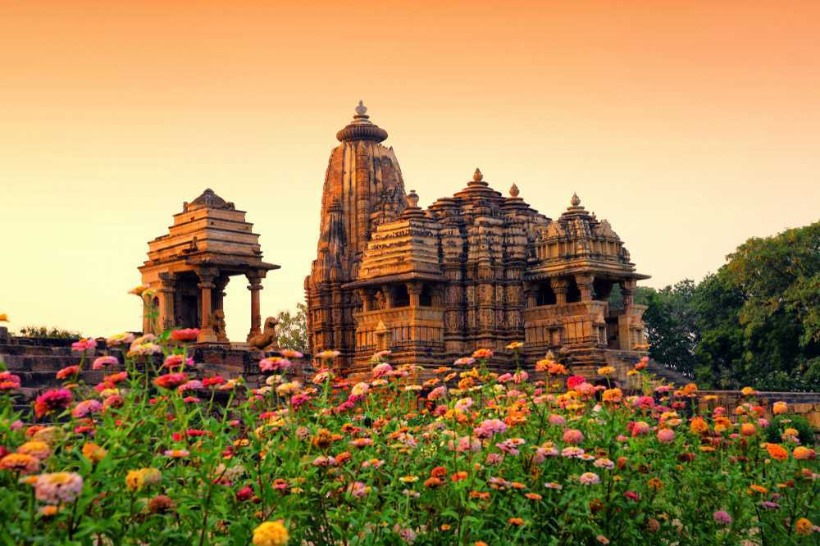
Khajuraho is celebrated for its cultural significance, primarily due to its depiction of various aspects of life, religion, and art during the medieval period in India. The temples of Khajuraho offer a window into the social, cultural, and religious practices of that era. They showcase the interplay between spirituality and sensuality, making them a unique cultural heritage.
Also Read: Khajuraho Temples That Are Beyond Magnificent
3. Temple Architecture
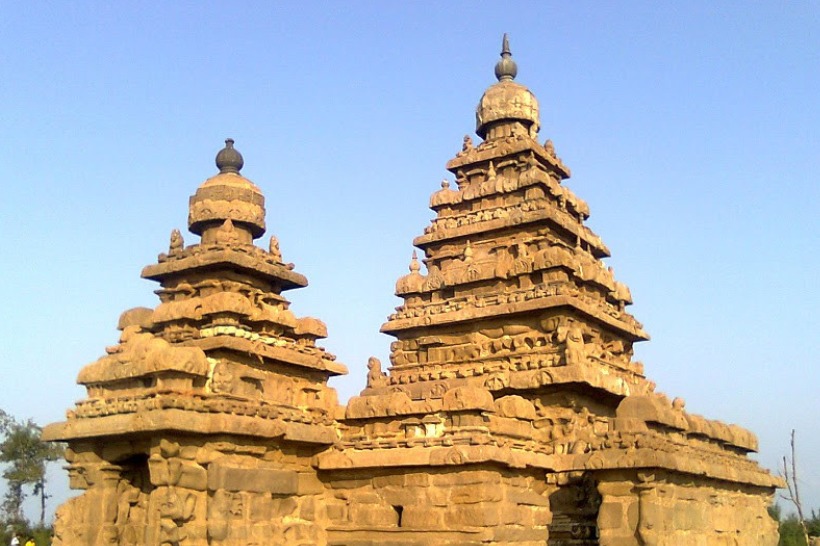
The temple architecture in Khajuraho is a stunning blend of Nagara and Dravidian styles. The complex includes both Hindu and Jain temples, each characterized by its own distinctive features. The architectural layout typically comprises a sanctum sanctorum (Garbhagriha), a vestibule (Antarala), and an assembly hall (Mandapa). The intricate carvings and sculptures on the temple exteriors are especially noteworthy, depicting gods, goddesses, mythical creatures, and various aspects of daily life.
The Khajuraho Group Of Temples is divided into two parts – the Eastern Group of Temples and the Western Group of Temples. The latter is more renowned among travelers as it is home to the largest temple, Kandariya Mahadeo Temple, dedicated to Lord Shiva. The Western Group mostly consists of temples dedicated to Hindu gods and goddesses. However, it also has three temples dedicated to Jain Tirthankaras.
Parasvanath, Adinath, Shantinath, and Ghantai are the four major temples dedicated to Jain Tirthankaras, which make up the Eastern Group Of Temples.
4. The Carvings and Sculptures
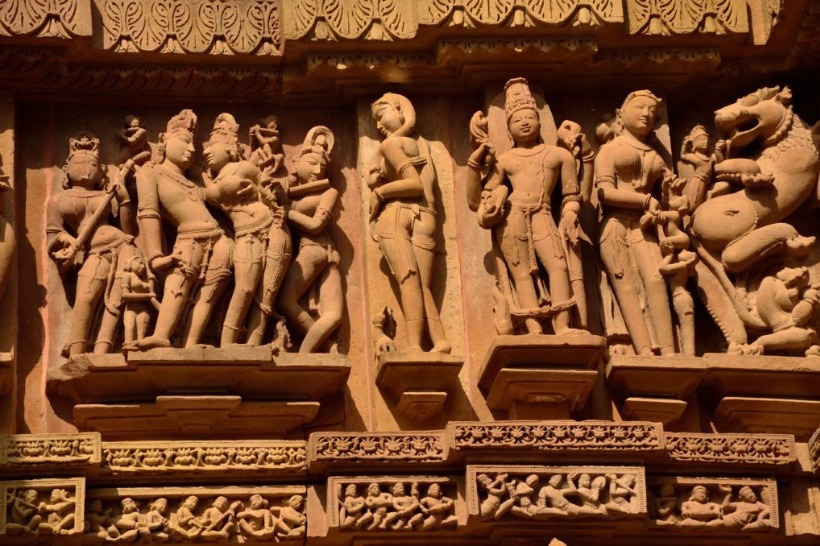
One of the most captivating aspects of Khajuraho’s temples is the remarkable carvings and history of Khajuraho sculptures that adorn their walls. These sculptures are not only artistically exquisite but also convey a profound message about the society and culture of the time.
The carvings depict various aspects of human life, including scenes of love, sensuality, dance, music, and daily activities. These intricate sculptures showcase the celebration of life and its various dimensions, reflecting the holistic worldview of ancient Indian culture. The carvings and sculptures also depict Shilpshastras- the Jain Tirthankaras, apsaras, deities, ganas, attendants, dancers, warriors, and musicians.
5. Spiritual and Philosophical Context
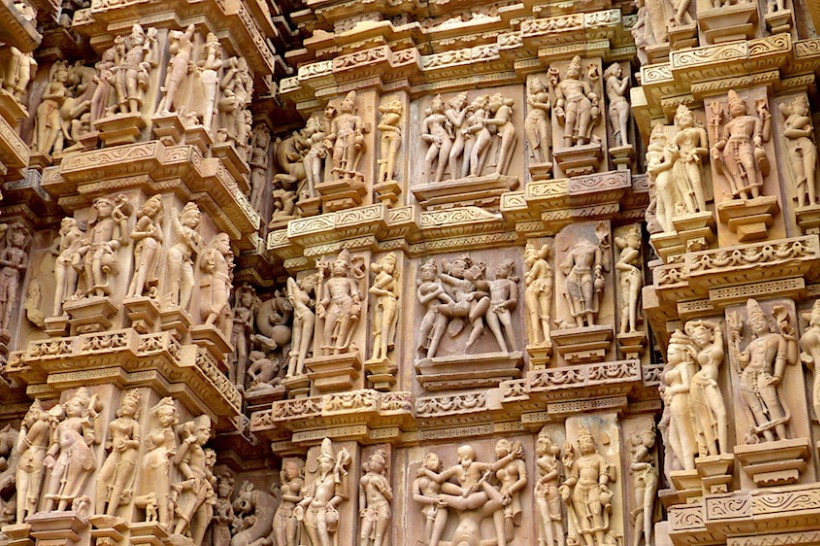
While Khajuraho’s temples are known for their sensuous depictions, they are also deeply rooted in spirituality and philosophy. The sculptures and carvings on the temples reflect the concept of moksha, or liberation from the cycle of birth and death, which is central to Hindu philosophy. The erotic carvings, often seen as controversial, are believed to represent the union of the physical and spiritual realms, symbolizing the path to enlightenment. In this context, Khajuraho’s temples are not merely a celebration of sensuality but also an exploration of the journey towards spiritual awakening.
6. Preservation Efforts
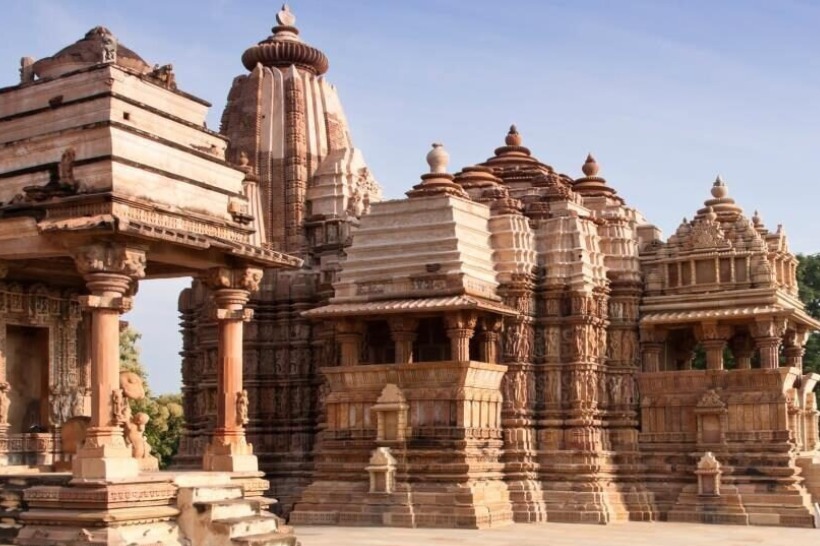
Over the centuries, Khajuraho’s temples faced various challenges, including natural deterioration, vandalism, and neglect. However, concerted efforts by the Indian government, archaeologists, and conservationists have ensured the preservation of this invaluable cultural treasure.
The Archaeological Survey of India (ASI) has played a pivotal role in the restoration and conservation of Khajuraho’s temples. Their efforts have included cleaning, structural repairs, and the development of visitor facilities to ensure that these architectural wonders are accessible to future generations.
7. Nearby Attractions

Khajuraho offers more than just its world-famous temples. The surrounding region is rich in natural beauty and historical significance, making it a complete tourist destination. Panna National Park, Raneh Falls, Ajaygarh Fort and Beni Sagar Dam are some of the must-visit tourist attractions around Khajuraho that should not be missed, whether you are a history buff or a nature enthusiast.
Khajuraho’s temples are not just architectural wonders but living testaments to India’s cultural diversity and historical depth. They remind us of the profound connection between art, spirituality, and human experience. Visiting Khajuraho is like stepping back in time and immersing oneself in the grandeur of India’s past, and there is no better way to do it than by staying at The LaLiT Temple View Khajuraho, one of the best 5-star hotels in Khajuraho. Overlooking the Western Group Of Temples, The LaLiT has every amenity you will need to make your trip to this culturally rich city a fulfilling experience.
